Title: “Kumbhkaran Vadh” – A Monumental Clash of Strength and Destiny in Rounak Rai’s Ramayana Series
In the vivid narrative tradition of the Ramayana, the battle between Lord Rama and Kumbhkaran stands as a titanic confrontation — not just of brute force, but of dharma versus misguided loyalty. In his expressive figurative painting “Kumbhkaran Vadh”, artist Rounak Rai breathes new life into this legendary episode through a stylistically bold and symbolically charged composition.
A Modern Mythic Canvas
Rounak Rai’s painting captures the moment of Kumbhkaran’s fall, where the demon giant, awakened from his deep slumber, joins the battlefield to honor his dharma towards his brother Ravan — even though he knows it’s a losing cause. In Rai’s interpretation, Kumbhkaran’s towering black figure dominates the composition, painted with jagged teeth, large hypnotic eyes, and a looming presence, making him both fearsome and tragic.
He is not shown merely as a villain, but as a tragic hero — a symbol of blind devotion conflicting with righteousness.
Figurative Elements and Symbolism
The twin brothers Rama and Lakshman are seen side by side in the foreground, aiming their arrows in perfect synchrony, symbolizing unity of purpose and divine precision. Their calm, focused posture stands in contrast to the chaos around them — a visual metaphor for clarity amid destruction.
The green backdrop, reminiscent of a forested battlefield, is alive with Vanar Sena warriors, many shown in action or falling, underscoring the immense devastation caused by Kumbhkaran’s wrath. The red and black hues emphasize bloodshed, fear, and ultimate judgment.
The monkeys—an army symbolic of devotion, loyalty, and simplicity—climb on the demon, poke his eyes, and distract him, showcasing the power of collective resistance. Still, it’s the divine archery of Rama and Lakshman that ultimately pierces the demon’s heart.
The arrows in Kumbhkaran’s belly, chest, and mouth — visualized in stylized, repetitive patterns — suggest not only the physical fall but also the symbolic silencing of ego and ignorance.
Textual Layering
In a unique integration of visual and literary traditions, Rai includes Devanagari script on the top-left, narrating the context of the battle. This technique mimics ancient manuscripts and temple murals, emphasizing the oral-visual culture of Indian storytelling.
It narrates how Kumbhkaran’s advice to Ravan went unheeded, yet his commitment to his brother led him to the battlefield — an act of loyalty, not malice. This nuanced view reflects Rounak Rai’s tendency to humanize even the antagonists, elevating the moral complexity of the Ramayana.
Artistic Style
Staying true to his evolving visual language, Rounak Rai blends tribal-folk elements, angular forms, and exaggerated expressions with a contemporary palette. The simplified anatomy and bold lines make the composition emotionally powerful while staying accessible and deeply rooted in Indian visual storytelling traditions.
The figures are stylized yet full of motion, echoing Kalighat pat, Mithila painting, and modern expressionist distortions. Rai’s flat perspective rejects realism in favor of symbolic hierarchy — where size denotes power, and color evokes moral positioning.
Conclusion
“Kumbhkaran Vadh” by Rounak Rai is more than a depiction of a battle — it’s a visual meditation on duty, devotion, and fate. It invites the viewer to reflect on the blurred lines between good and evil, heroism and helplessness. By infusing myth with modern visual storytelling, Rai offers a compelling reinterpretation of epic memory, relevant not only to our cultural past but to our moral present.

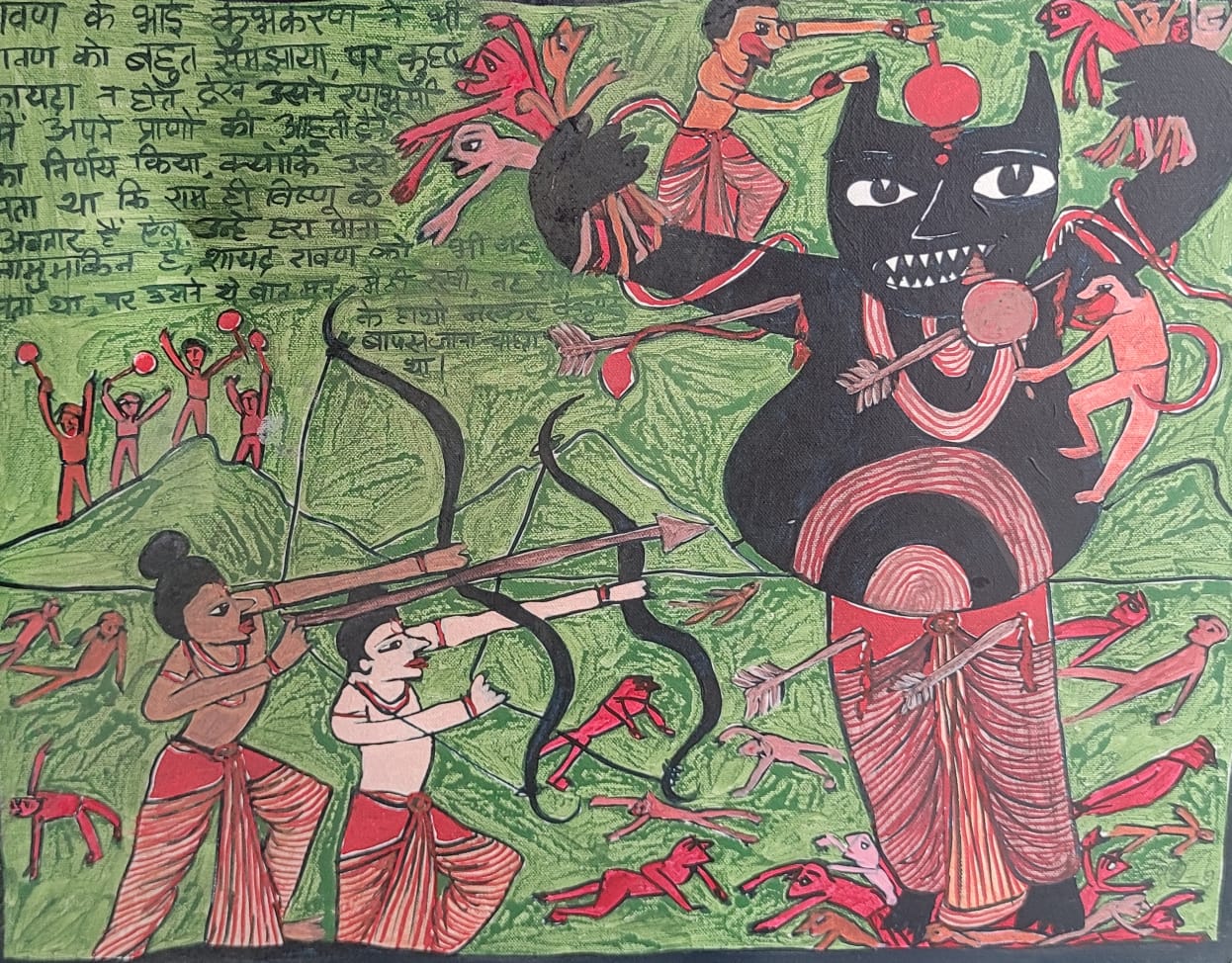
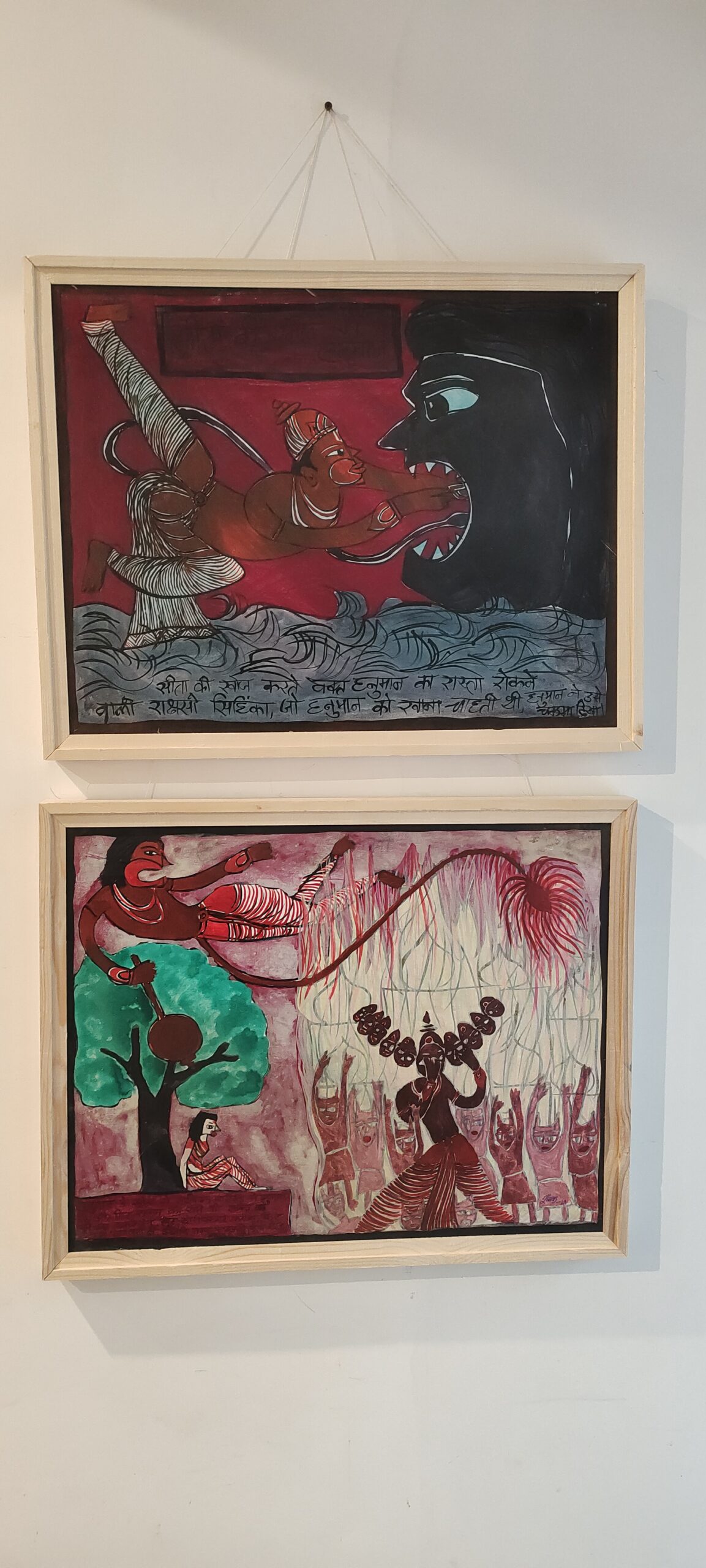
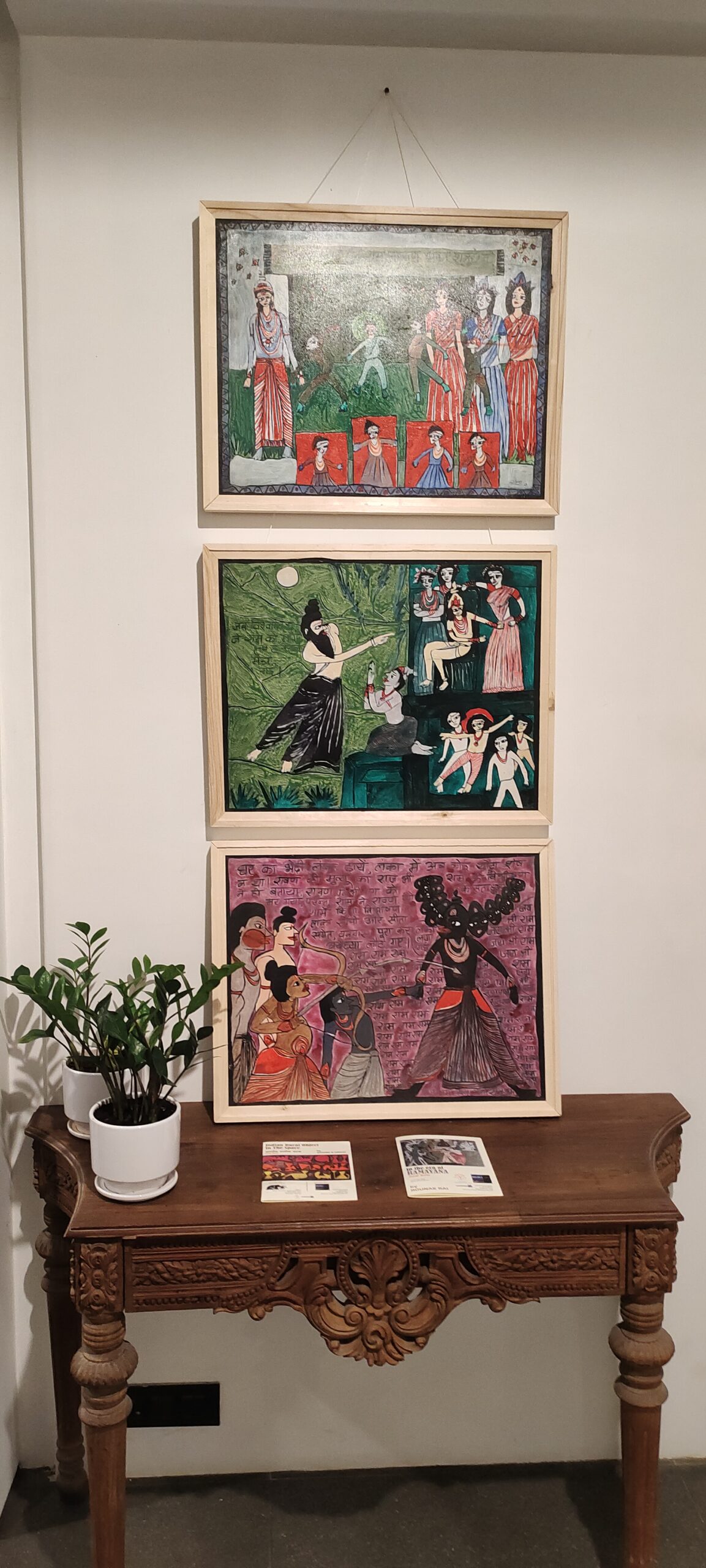
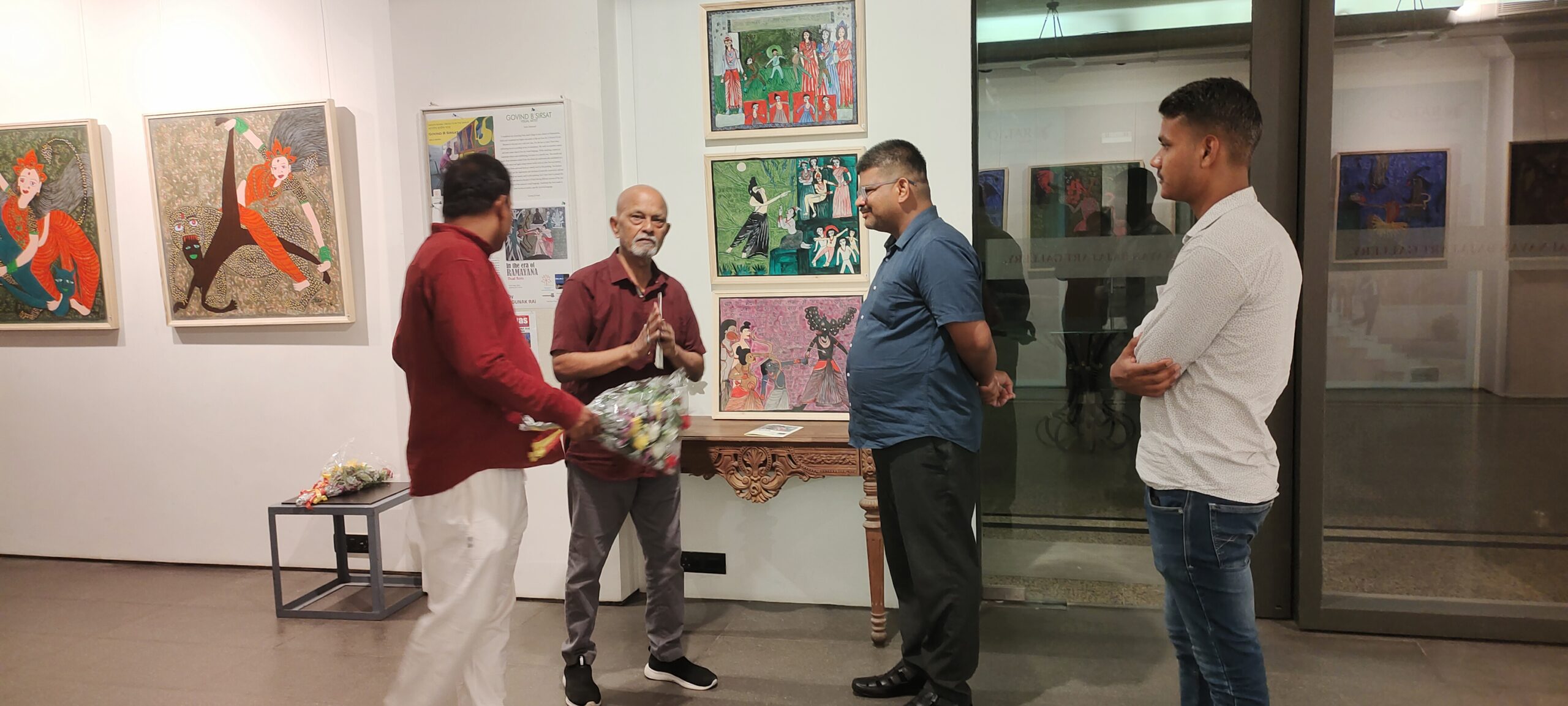
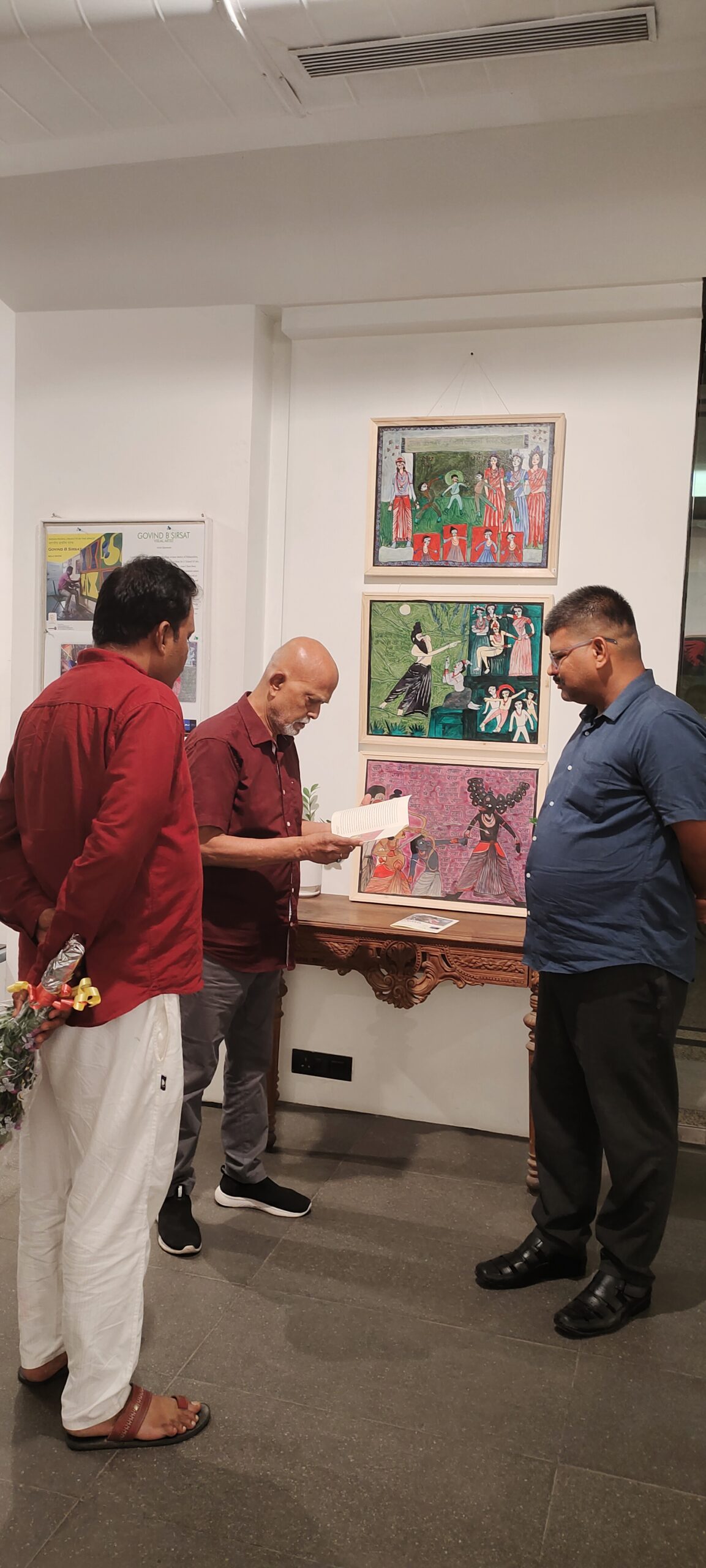
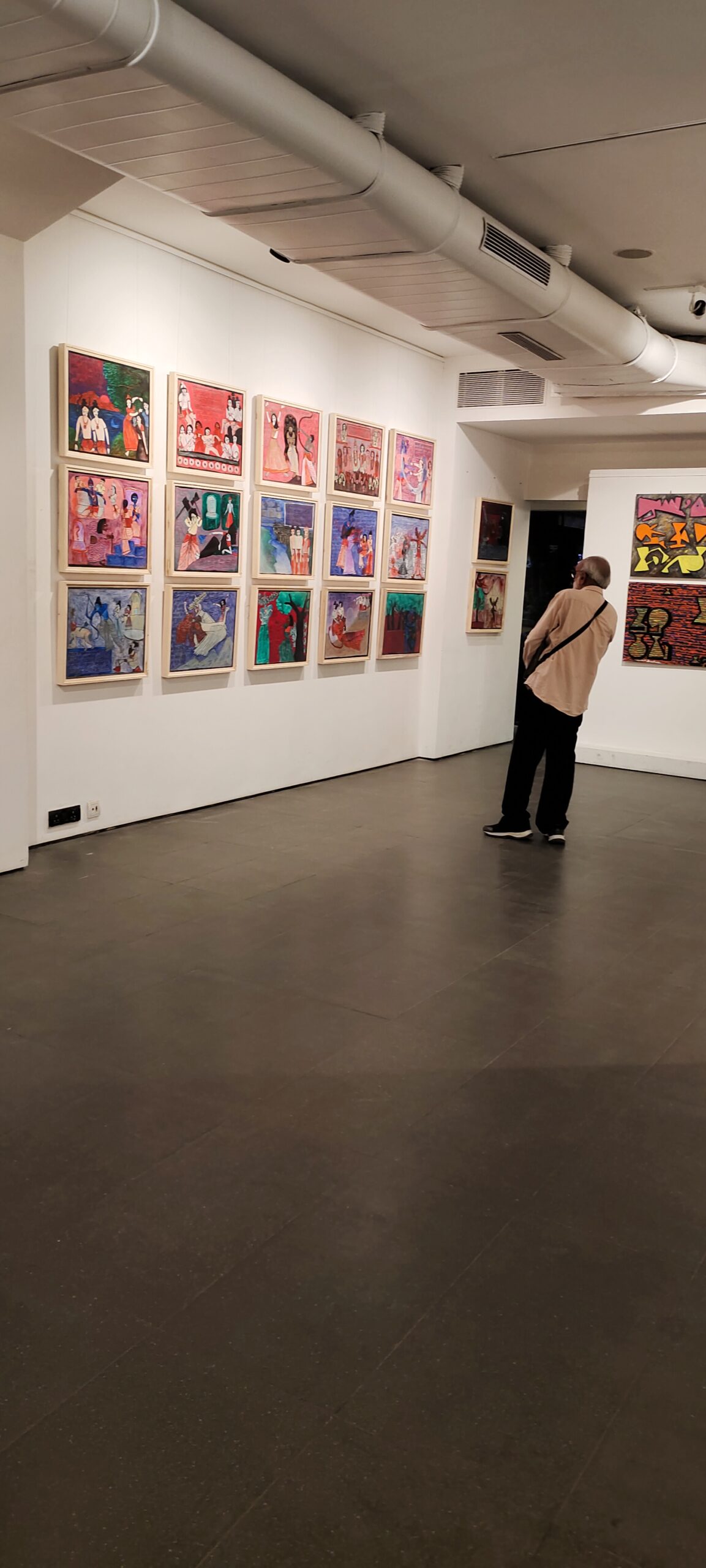
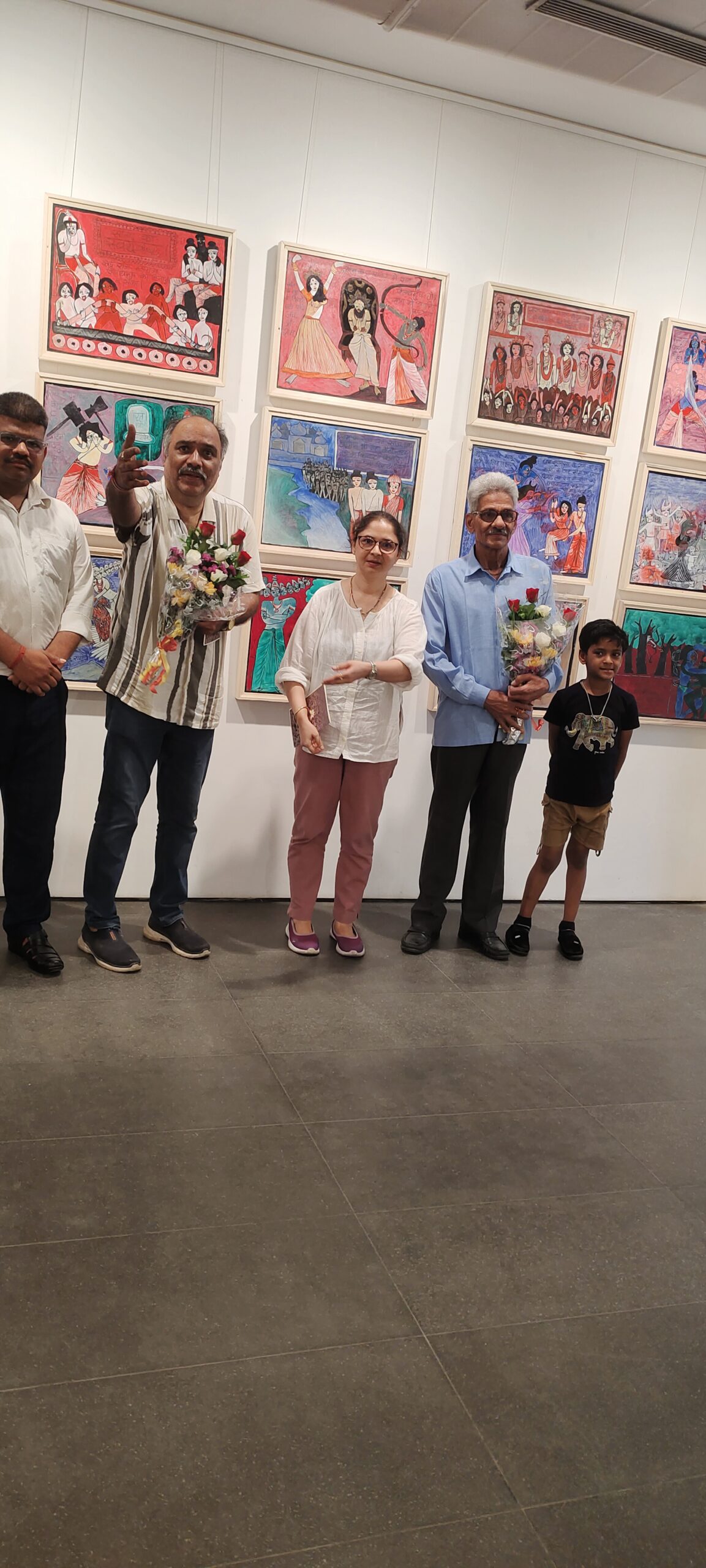
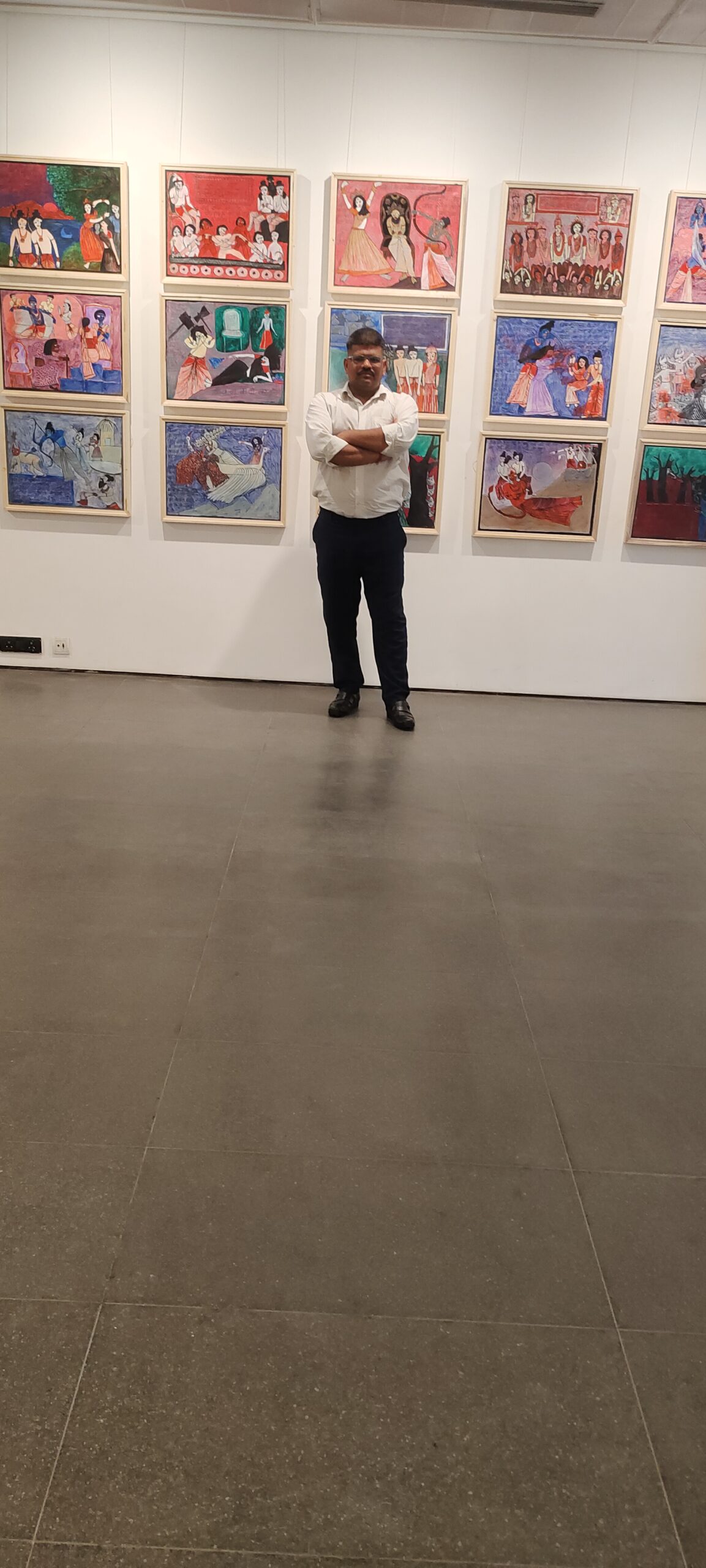
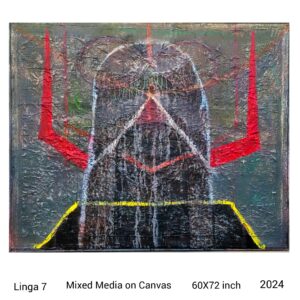
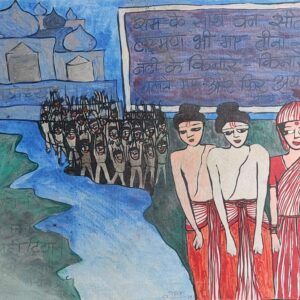
Reviews
There are no reviews yet.